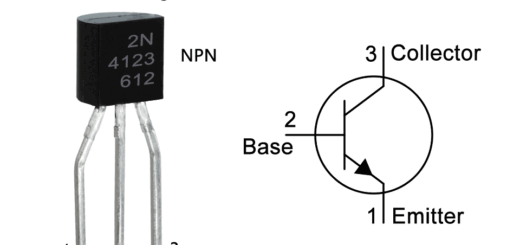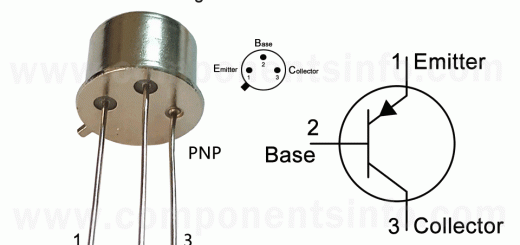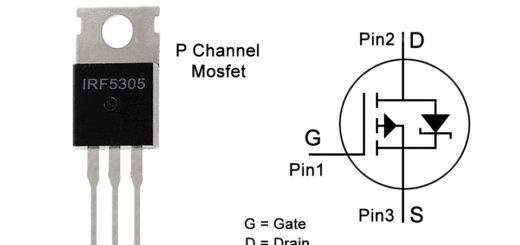MJE15030 Transistor Pinout, Equivalent, Features, Applications and Other Details
MJE15030 is a TO-220 package NPN transistor designed to be used in audio amplifier driver circuits. In this post we will understand MJE15030 transistor pinout, equivalent, features, applications and other details about this device.
Absolute Maximum Ratings:
- Package Type: TO-220
- Transistor Type: NPN
- Max Collector Current(IC): 8A
- Max Collector-Emitter Voltage (VCEO): 150V
- Max Emitter-Base Voltage (VEBO): 5V
- Max Base Current (IB): 2A
- Max Collector Power Dissipation (Pc): 50W
- Minimum & Maximum DC Current Gain (hFE): 40
- Max Storage & Operating temperature Should Be: -65°C to 150°C
PNP Complementary:
PNP Complementary of MJE15030 is MJE15031
Replacement and Equivalent:
MJE5740, MJE15032, KSD5741, BU807, BU806, 2SD1123
MJE15030 Transistor Explained / Description:
MJE15030 is a part of a series which also contains MJE15028. The transistor is having some good features which are the transition frequency of 30MHz, availability of complimentary pairs and high collector-emitter voltage of upto 150V.
The transistors are designed to be used in high frequency drivers in audio amplification circuits but due to its good overall specs, it can also be used in many different applications.
Looking at the pin layout of the transistor the first pin is base, second pin is collector which is also connected with the mounting base of tap and the third pin is emitter.
The absolute maximum ratings of the transistor are as follows: the collector-emitter voltage of the transistor is 150V, collector current is 8A, peak collector current is 16A, emitter-base voltage is 5V, base current is 2A, total power dissipation is 50W, junction temperature is 150°C and minimum and maximum storage temperature range is from -65°C to 150°C.
Where We Can Use it & How to Use:
As we have discussed above that MJE15030 is designed to be used in high frequency drivers in audio amps but due to its good electrical characteristics it can also be used in variety of other applications which includes inverters, motor controllers, power supplies, lighting systems, telecommunication applications etc.
To use the transistor as a switch apply signal to its base through a suitable resistor. Connect the negative wire of the load with the transistor collector. The positive wire of the load will be connected with the positive rail of the power supply and the emitter pin will be connected with the negative rail of the circuit.
To use the transistor as an amplifier apply the signal (which you want to amplify) to its base through a suitable coupling capacitor and baising network of two resistors. connect the collector with the positive rail of the circuit and connect a load resistor between the positive rail of the circuit and the collector of the transistor. The output or amplified signal will be received from the load resistor and the collector. The emitter pin will be connected with the negative rail of the circuit through a resistor and a capacitor connected parallel to each other.
Applications
Motor Driver Circuits
Voltage regulators
Power Supplies
Audio Amplifiers
DC-DC Converters
Battery Charger Circuits
Lighting Control Circuits
Safe Operating Guidelines:
Here are the safe operating guidelines of the transistor.
- Always use the transistor at least 20% below from its absolute maximum ratings.
- So the maximum collector current of the transistor is 8A but according the above 20% rule we will only use 6.4A.
- The maximum collector-emitter voltage is 150V but as per the 20% rule, we will not drive a load of more than 120V.
- Always use heatsink with the transistor.
- The storage and operating temperatures range from -65°C to 150°C.
Datasheet:
To download the datasheet just copy and paste the below link in your browser.
https://eu.mouser.com/datasheet/2/308/1/MJE15028_D-2315691.pdf



